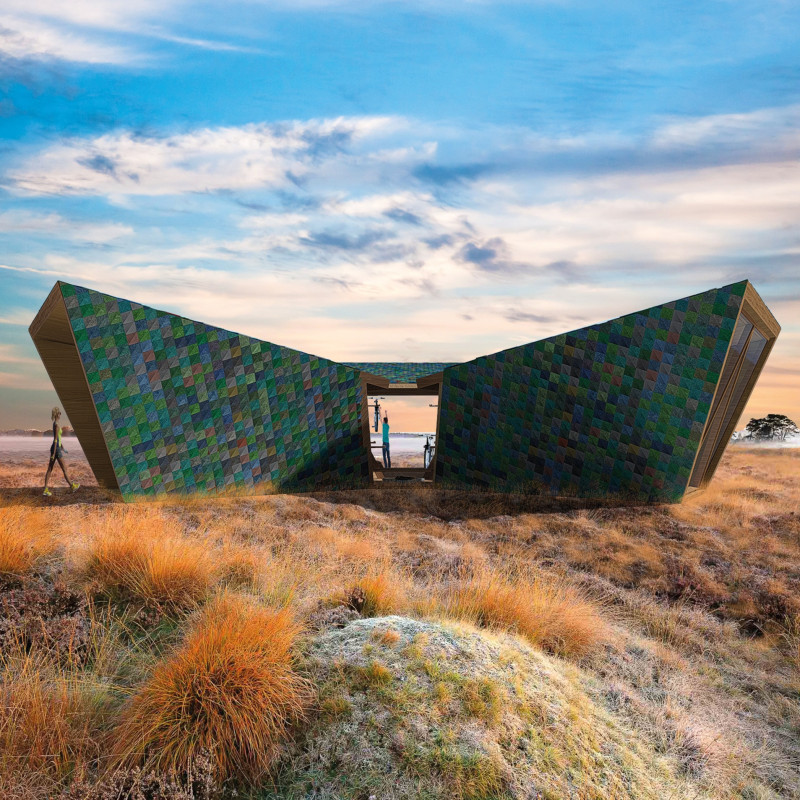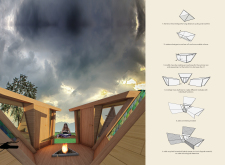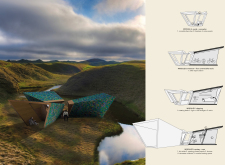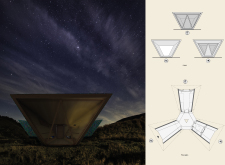5 key facts about this project
The design centers on the tent as a concept, developed for long-distance cyclists and travelers. It is situated along popular cycling routes and aims to meet the varied needs of users while promoting sustainable living. The overall design emphasizes efficiency, practicality, and respect for the environment, creating spaces that encourage social interaction and personal privacy.
Modular Design and Spatial Efficiency
The approach taken here is modular, resulting in distinct sections that serve specific functions. By adjusting the traditional tent shape, architects have reduced the footprint while increasing usable space. This thoughtful arrangement facilitates easy movement and interaction among users. Features, such as overhangs, offer shade during warmer months, improving comfort and helping with climate regulation inside the spaces.
Social and Communal Spaces
The social connector module includes movable benches and a fireplace, which invite users to gather and interact. Such elements create an environment that encourages the sharing of experiences. Solar panels are part of the design, reinforcing a commitment to sustainability and ensuring that communal spaces remain energy-efficient.
Functional Amenities
The entrance module is designed to accommodate covered bike racks and a bike repair station that serve the practical needs of cyclists. Inside, the sleeping area includes rotating beds that maximize space usage. It also features essential items such as lighting and USB charging stations. These facilities reflect a clear understanding of the requirements for long-distance travelers, emphasizing comfort and utility.
Sanitary Provisions and Resource Management
Dedicated sanitary facilities incorporate a bio toilet and showers, supporting eco-conscious practices. Rainwater collection systems further enhance the focus on self-sufficiency, providing essential utilities while minimizing environmental impact.
The attention to both shared and private needs culminates in a design that emphasizes sustainability and comfort. Notably, the use of recycled household plastic waste in the façade serves as both an ecological statement and a functional aspect of the design, highlighting a commitment to reducing environmental harm.






















































